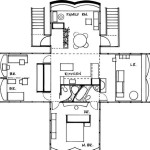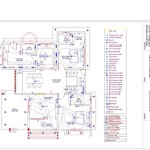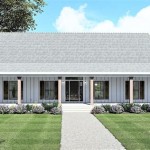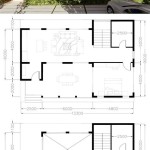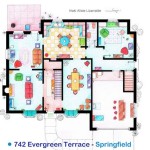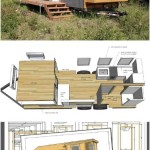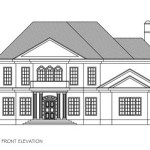Beekeeping Honey House Plans
A honey house is a dedicated space for extracting, processing, and storing honey and other bee products. Proper planning and design are crucial for creating an efficient and sanitary honey house that meets regulatory requirements and ensures the quality of the final product. This article explores key considerations for beekeeping honey house plans.
Location and Size
Choosing the right location and size for a honey house is paramount. The location should be easily accessible for transporting honey supers from the apiary and delivering finished products. Adequate space for maneuvering vehicles and equipment is necessary. Proximity to water and electricity is also essential for cleaning and processing operations. The size of the honey house will depend on the scale of the beekeeping operation, considering both current needs and potential future expansion. A smaller operation may function efficiently in a compact space, while larger commercial operations require significantly more square footage. Careful planning should account for distinct areas for honey extraction, processing, bottling, storage, and a small office or workspace.
Layout and Workflow
An efficient honey house layout optimizes the workflow from extracting honey from the frames to storing the finished product. A logical flow typically progresses from a honey extraction area to a processing area, followed by a bottling and labeling area, and finally, a storage area. This linear arrangement minimizes cross-contamination and streamlines the process. The extraction area should accommodate uncapping equipment, extractors, and initial filtering systems. The processing area houses equipment for further filtering, heating, and clarifying the honey. The bottling and labeling area requires ample counter space and storage for bottles, labels, and other packaging materials. The storage area should be climate-controlled to maintain honey quality and prevent crystallization.
Materials and Construction
Honey houses should be constructed with durable, easy-to-clean materials that meet food safety standards. Floors should be made of smooth, non-porous materials like sealed concrete, which are easy to sanitize and can withstand spills. Walls and ceilings should be similarly smooth and washable, preferably made of materials resistant to moisture and pests. Stainless steel is a popular choice for surfaces that come into direct contact with honey due to its hygiene and corrosion resistance. Good ventilation is crucial to prevent moisture buildup and maintain a comfortable working environment. Proper insulation can help regulate temperature and reduce energy costs associated with heating and cooling.
Sanitation and Pest Control
Maintaining a sanitary environment within the honey house is critical for producing safe and high-quality honey. Regular cleaning and sanitation protocols should be implemented to prevent contamination from bacteria, yeast, and other microorganisms. All surfaces, equipment, and tools should be thoroughly cleaned and sanitized after each use. Effective pest control measures are equally important. Honey houses are attractive to insects and rodents, so preventative measures, such as screens on windows and doors, sealed cracks and crevices, and regular inspections, are essential to prevent infestations and protect the honey from contamination.
Equipment and Utilities
The selection of appropriate equipment depends on the scale and budget of the beekeeping operation. Essential equipment includes honey extractors, uncapping tools, filters, honey tanks, bottling equipment, and a labeling machine. Investing in high-quality, durable equipment can improve efficiency and reduce long-term costs. Adequate electrical supply is crucial to power the various equipment pieces. Plumbing is necessary for water supply and drainage for cleaning operations. Hot water access is beneficial for sanitizing equipment and melting crystallized honey. Consideration should be given to the placement of electrical outlets and plumbing fixtures during the planning phase to ensure optimal functionality and accessibility.
Regulations and Permits
Before building or operating a honey house, it's crucial to research and comply with local regulations and obtain the necessary permits. Regulations may vary depending on the location and scale of the operation. Requirements may pertain to food safety, waste disposal, building codes, and zoning regulations. Contacting local authorities and relevant agencies, such as the department of agriculture or health department, is essential to ensure compliance and avoid potential legal issues. Obtaining the required permits and licenses before commencing operations ensures that the honey house meets all legal standards and can operate legally.
Storage and Inventory Management
Proper storage practices are vital for maintaining the quality and shelf life of honey. The storage area should be cool, dark, and dry, with a stable temperature to prevent crystallization and fermentation. Honey should be stored in airtight containers made of food-grade materials. An efficient inventory management system helps track honey production, sales, and stock levels. This can involve manual tracking methods or utilizing software specifically designed for inventory management. Proper inventory management ensures that honey is sold within its optimal timeframe and minimizes losses due to spoilage or crystallization.

Mobile Honey House Bee Keeping

Ga Architects Larinka Apiary Architect Bee

Honey House Set Up Keeping Backyard Bees

A Montana Bee House From Dutch Design Honey Suite

Bee Box Plans Boxes Hives Diy

Bee House Educational Apiary Enrico Sassi Architetto Archdaily

A Montana Bee House From Dutch Design Honey Suite

Honey Bees And Beekeeping Uga Cooperative Extension

18 Creative Diy Beehive Plans For Your Own Beekeeping Insteading

Bee House Educational Apiary Enrico Sassi Architetto Archdaily

